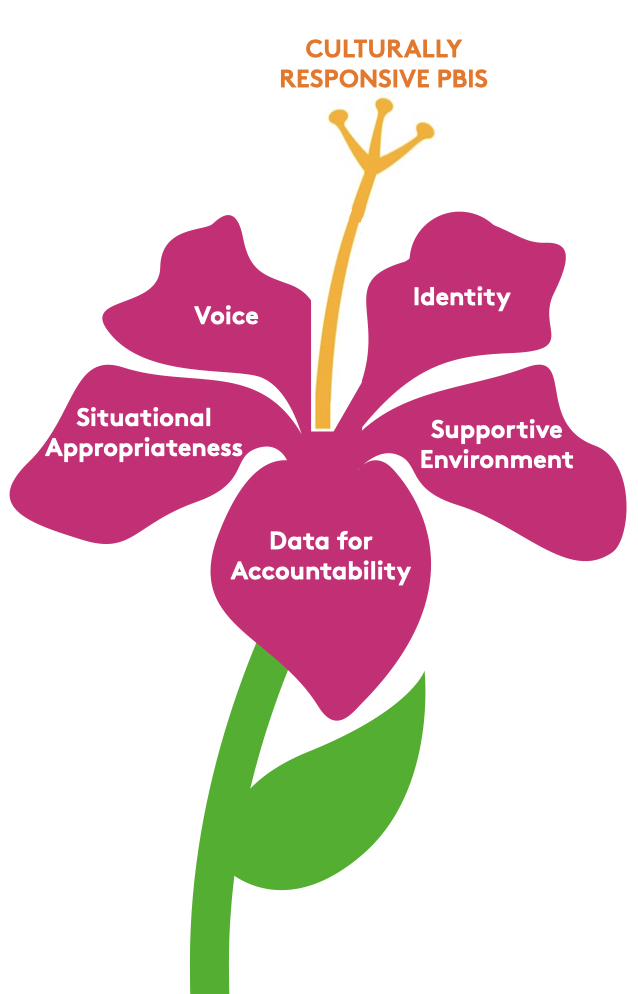In order to embed equity efforts into school-wide positive behavioral interventions and supports, we need to align culturally responsive practices to the core components of PBIS.
What does cultural responsiveness in PBIS look like in action?
- Include student and family/caregiver voices meaningfully in classroom and schoolwide systems
- Ensure that schoolwide and classroom expectations/agreements reflect the values and norms of students, families/caregivers, and communities
- Build positive teacher-student relationships
- Provide professional development for staff to learn about and understand their own cultural backgrounds and personal biases
- Acknowledge and provide feedback on students’ prosocial behavior meaningfully
- Respond to problem behavior instructionally instead of punitively
Culturally Responsive PBIS is made up of Supportive Environment, Identity, Situational Appropriateness, Voice, and Data for Accountability.
More information and resources about equity work within PBIS implementation can be found here.

